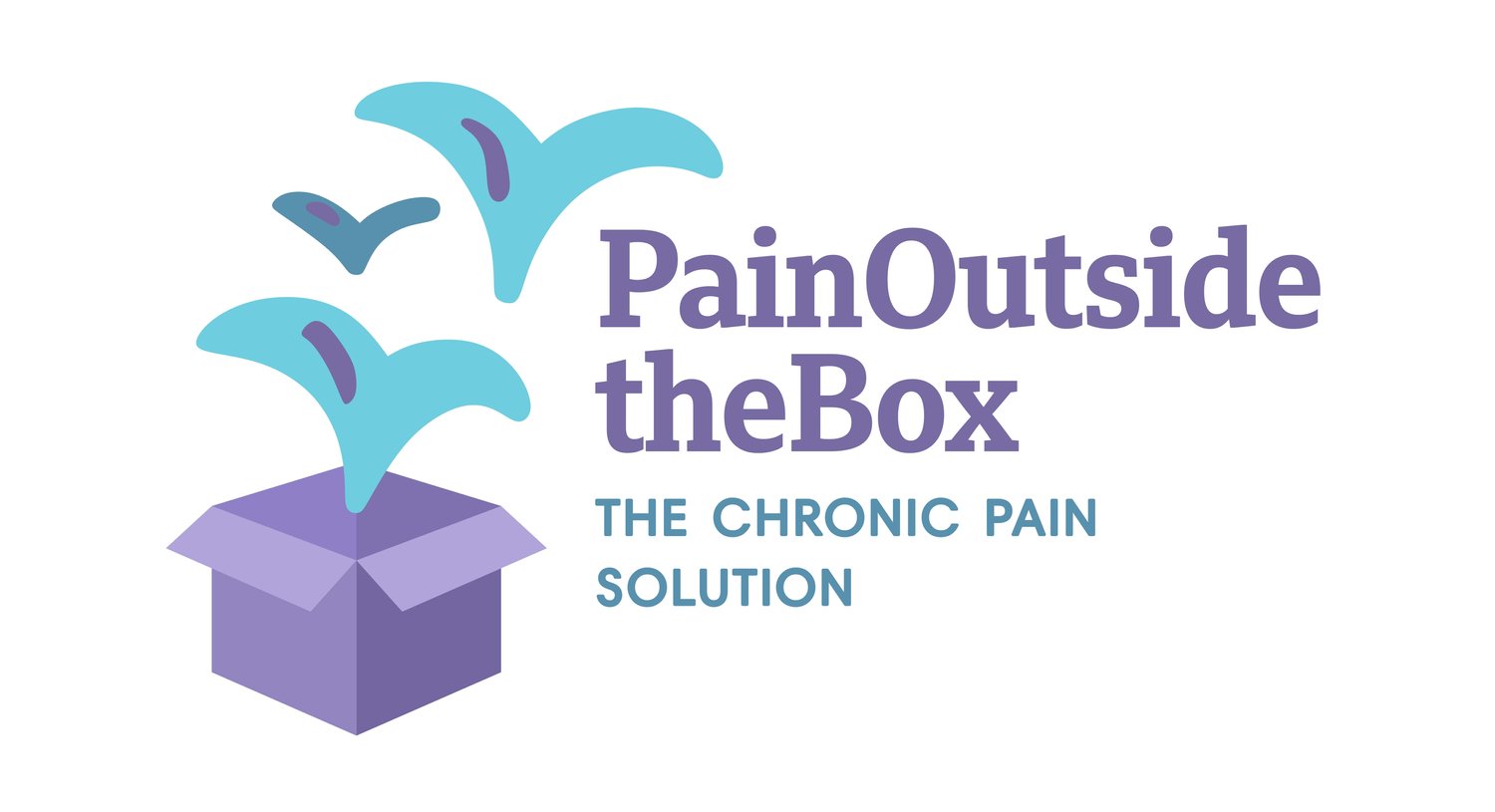What is Pain Reprocessing Therapy?
As Dr John Sarno’s TMS theory gained validation through further research in Neuroscience and Neuroplastic Pain, the term Pain Reprocessing Therapy (PRT) has emerged among the community of psychotherapists, doctors and and other wellness practitioners who advocate the TMS approach.
Pain Reprocessing Therapy was developed by the Pain Psychology Center, which is run by Alan Gordon, a key figure in the field of Neuroplastic Pain, who has trialled the approach with great success.
This approach essentially focuses on teaching chronic pain sufferers to interpret and process pain differently.
This is done by teaching the brain to interpret pain as safe, and thereby deactivate the cycle of fear and pain that is usually at play behind most chronic pain conditions.
How Pain Reprocessing Therapy Works: Central Sensitization
To understand how Pain Reprocessing Therapy works, you need some basic understanding of a process called central sensitization.
Central sensitization can be defined as “an amplification of neural signaling within the central nervous system that elicits pain hypersensitivity” (1). In simple terms, it refers to a process whereby nociceptors — which are those sensory neurons in the body that fire the pain response whenever they detect a threatening sensation — start to respond more than usual.
The job of these nociceptors is to send signals to the brain in order warn it about a potential threat (for example, an injury or a burning surface). As a result, pain is generated in the body. This response is meant to get us out of the danger zone, and it usually works very well under normal circumstances.
In fact, if we touch a hot surface, we are quick to react and back away - this is because the nociceptors have communicated this threat to our brain, which led to a painful sensation that made us react and stop touching that surface! If it weren’t for those nociceptors, we would be more likely to injure ourselves seriously as we wouldn’t react.
But central sensitization can occur when these nociceptors get a bit overreactive, so that they start to interpret triggers or sensations that are not really dangerous as an actual threat. Because our brain receives this danger signal, we are capable of feeling pain even when there is no real danger (or injury) present.
Neuroplastic pain results from the brain misinterpreting safe messages from the body as if they were dangerous. In other words, neuroplastic pain is a false alarm.
PRTwiki.org (2)
With time, as we re-experience the same triggers and interpret them as a threat to our safety, the brain can learn to generate the pain response more than usual, which leads to hypersensitivity.
Learn the best pain reprocessing & emotional healing techniques
Learn how to implement pain reprocessing techniques and other practices in the 60 Day Pain Free Breakthrough Program.
Get lifetime access to all recorded lessons and downloadable pain reprocessing exercises.
Get coached!
Get full support with your recovery & learn powerful PRT techniques!
Pain Hypersensitivity
Hypersensitivity is simply the condition of being more sensitive to certain triggers (these triggers can be simple movements, sensations, touch, and even the weather!). It can be aggravated through stress, anxiety, and the way we continue to attach negative meaning to painful sensations. This happens due to the involvement of our limbic system in the generation of pain, which is the part of our brain where emotions take place.
Pain is not the only symptom that can be experienced due to this hypersensitivity, but it is one of the most common. In fact, in PRT, the chronic pain that results due to the process of central sensitization is known as Neuroplastic Pain, which means that pain is being generated as a learnt and conditioned response.
Neuroplastic pain can manifest in the form of chronic back and neck pain, sciatica, piriformis syndrome, fibromyalgia symptoms, RSIs, and a host of other unexplained chronic conditions.
Most of the time, the pain originates after a highly stressful or traumatic period, and persists due to the process of central sensitization and hypersensitivity as described above.
Pain Reprocessing Therapy techniques
I like to think of PRT as a branch of the TMS (Tension Myoneural Syndrome / MindBody Syndrome) approach. This specific aspect focuses on working with the brain’s neuroplasticity in order to teach the brain how to ‘unlearn’ the pain response.
In other words, it’s about teaching yourself that the pain you are feeling is not likely to be a result of structural damage or injury (at least once these have been ruled out), so that you can start to interpret the sensations as less dangerous.
It is only natural to react with fear, anxiety, disappointment and frustration when symptoms intensify or recur, yet these very emotions serve to validate the assumption that the pain is somehow threatening, and therefore keeps the process of central sensitization going strong.
To put it simply, pain reprocessing therapy involves cultivating a different attitude and reaction to the pain, so that the danger signal ultimately stops being fired. This can lead to a complete elimination of pain, as the brain no longer remains hypersensitive.
Techniques used in PRT include:
meditation to induce the relaxation response;
somatic tracking exercises aimed at teaching you how to interpret pain more objectively;
self-talk and thought-redirection techniques to eliminate unwanted thoughts and emotions.
I teach all of these techniques plus other effective mindbody tools in my 6-week Pain Reprocessing Program for chronic pain sufferers.
Pain Reprocessing Therapy versus Emotional Release
Traditionally, the focus of the TMS/MindBody Syndrome approach has been on exploring any repressed emotions, traumatic experiences or stressors that have led to pain onset.
This is where techniques like journaling and emotional release come in. For more information on this aspect, please refer to my article on TMS and Emotional Repression.
Yet in PRT, the emphasis is on how on changing the way that one has learnt to respond and react to the pain itself.
This is because those people who are already aware of what triggered the pain in the first place, and who feel that their trauma has been resolved may still find it difficult to step out of Neuroplastic pain due to the conditioning process that has taken hold.
In my opinion, both elements need to be addressed in order for someone to recover completely from chronic pain. PRT on its own will help reduce and eliminate symptoms, but if there is still any strong emotional turmoil going on, it is likely for the sufferer to experience a different symptom, or to re-experience the symptom.
It’s always best to tackle the root cause of chronic pain, which in my opinion is twofold:
1) the emotional state that led to the pain onset and
2) the central sensitization and hypersensitivity that may occur due to the way we respond to pain.
Get coached on PRT & MindBody Pain
If you resonate with the above and think it may apply to your chronic symptoms, then I encourage you to look further into the possibility of healing yourself.
I can introduce you to Pain Reprocessing techniques and other tools during a 1:1 Coaching Session or as part of my intensive Pain Free Breakthrough Recovery Program, by making you aware of those emotions and habits that may be keeping the pain cycle going (and getting you to start changing them!)
Thanks to increased awareness, as well as slight changes in your habitual ways of thinking and behaving, you can recover from conditioned, neuroplastic pain by working with the brain.
References
(1) Woolf CJ. and Central sensitization: implications for the diagnosis and treatment of pain. Pain. 2011; 152: S2– S15. http://dx.doi.org/10.1016/j.pain.2010.09.030.
(2) ‘An Introduction to PRT’, https://www.prtwiki.org/prt/An_Introduction_to_PRT
Additional Resources
Yoni K. Ashar, PhD; Alan Gordon, LCSW4; Howard Schubiner, MD et al, ‘Effect of Pain Reprocessing Therapy vs Placebo and Usual Care for Patients With Chronic Back Pain: A Randomized Clinical Trial’, Jama Psychiatry, September 2021.
Alan Gordon & Alon Zivf, The Way Out: A Revolutionary, Scientifically Proven Approach to Healing Chronic Pain, Vermillion (2021).
Jo Nijs, PT, MT, PhD, Dorien Goubert, PT, MSc, Kelly Ickmans, PT, PhD, ‘Recognition and Treatment of Central Sensitization in Chronic Pain Patients: Not Limited to Specialized Care’, Journal of Orthopaedic & Sports Physical Therapy, Nov 2016, Vol. 46, Issue 12. https://www.jospt.org/doi/10.2519/jospt.2016.0612.
Alban Latremoliere and Clifford J. Woolf, ‘Central Sensitization: A Generator of Pain Hypersensitivity by Central Neural Plasticity’, J Pain. 2009 Sep; 10(9): 895–926.
doi: 10.1016/j.jpain.2009.06.012.
‘Tame the Beast’ https://www.tamethebeast.org/#tame-the-beast
+ What is Pain Reprocessing Therapy?
Pain Reprocessing Therapy is an approach aimed at changing the way your brain processes pain triggers. The approach was developed by The Pain Psychology Center, and is based on the premise that pain is a danger signal. Because of this, any activities or situations which we perceive as threatening are more likely to cause or intensify pain.
+ Does Pain Reprocessing therapy work?
A randomized clinical trial conducted in 2021 found that 66% of participants who were treated with pain reprocessing therapy had no more pain or nearly no pain after 4 weeks of therapy. 98% of them had improved pain levels. This was in stark contrast to the Placebo group (20% had no pain) and the group treated with conventional care (only 10% had no pain after treatment).
+ What does PRT consist of?
PRT consists of teaching your brain to interpet triggers and painful sensations as less threatening. This lowers the 'threat level', which is associated with the generation of the pain response. Exercises like somatic tracking and meditations can be helpful in bringing about this change.
+ Is PRT the same as Sarno's TMS method?
Pain Reprocessing Therapy is less focused on repressed emotions, when compared to Sarno's ideas. Although emotions play a huge role when it comes to pain onset, PRT can help you eliminate pain even though there may still be significant stressors in your life. Both approaches are entirely compatible, and both focus on decreasing the fear factor in the generation of chronic pain.




